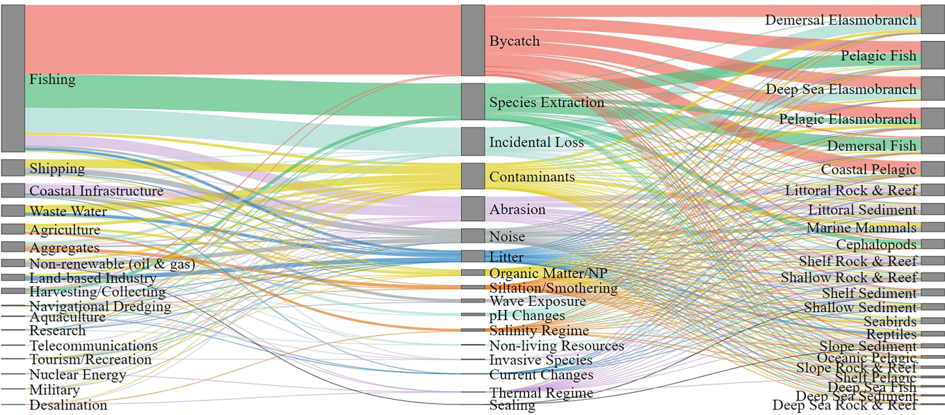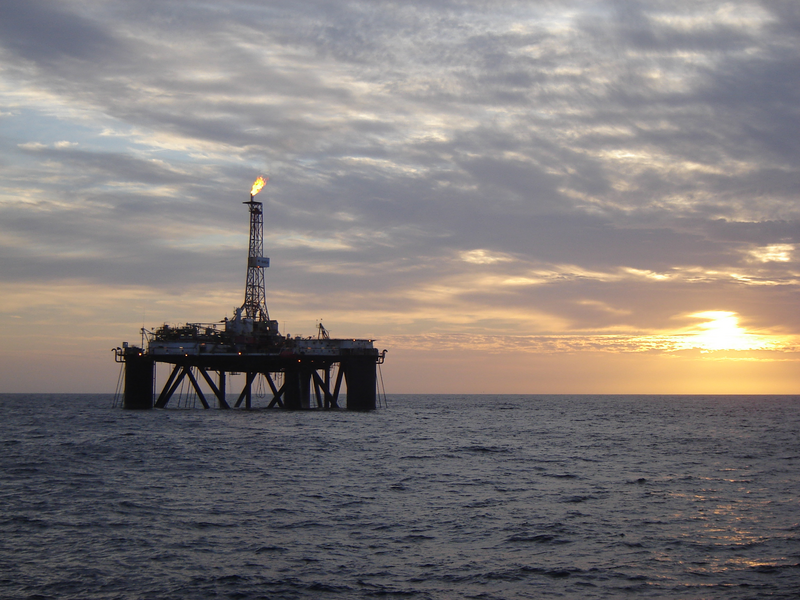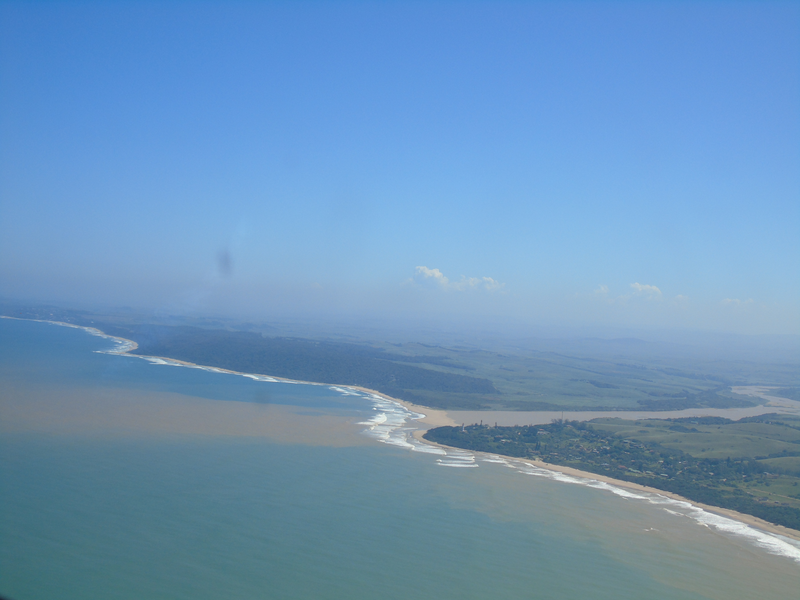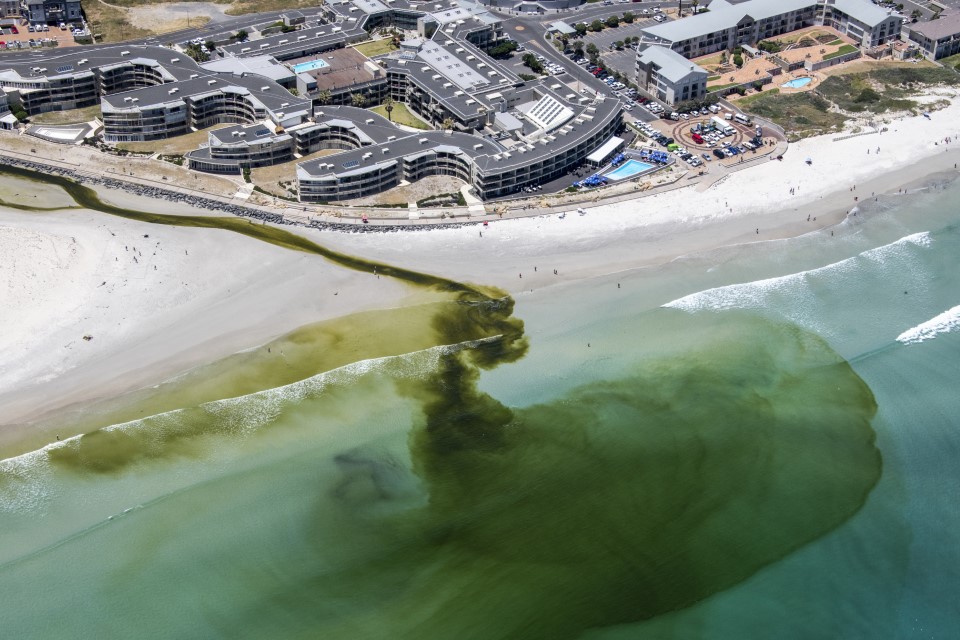
Marine ecosystems and species face pressures from an increasing range and intensity of human activities that continue to expand and diversify as South Africa develops its ocean economy. Fishing, particularly widespread industrial fishing, continues to exert the greatest pressures on marine biodiversity, affecting ecosystems, species and genetic diversity. The impacts of fishing need to be effectively managed to ensure sustainable fisheries that can support ocean life and livelihoods and pressure mapping needs to be updated and improved for more accurate assessments, especially at finer scales. Mining, petroleum, port and harbour development and shipping also drive degradation with increasing pollution and climate change exacerbating concerns

Cumulative Pressures
South Africa uses cumulative pressure mapping as a key input into the assessment of marine ecosystem threat status. A total of 31 pressures have been mapped to support biodiversity assessment and spatial planning1. These include historical pressures that may have ceased in some areas but have contributed to long term changes in ecological condition. Both the number and intensity of pressures is considered in cumulative pressure mapping.

Areas with high cumulative pressures include most bays, the area offshore of the Orange River, the shelf edge off the west and south coasts, large portions of the Cape inner and middle shelf, the Agulhas Bank and the KwaZulu-Natal Bight. The highest cumulative pressure in the marine realm was recorded in Saldanha Bay.
Hotspots of degradation and cumulative impacts are often driven by the location of ports and harbours, which alter shorelines and circulation, increase urbanisation and access for fishers, increase pollution, and facilitate the introduction and spread of invasive species. New ports and harbours can have substantial impacts on marine biodiversity and livelihoods and therefore warrant careful evaluation in spatial planning and decision-making.
Skein et al. (2022) examined 17 key pressures from 17 different sectors and their links to 23 key ecosystem characteristics (Figure 1) that have implications for ecosystem services. Fishing, petroleum (referred to as “Non-renewable (oil and gas)” in Figure 1) and shipping had the most widespread effects across the most ecosystem components, accounting for 30% of total linkage pathways identified, with fishing showing the most linkages overall. This is due to the extensive and complex nature of these three sectors, each of which comprise various components that may impact marine life in different ways. For example, offshore oil and gas sector activities include exploration (invasive and non-invasive), production and transport, each exerting different pressures on marine biodiversity. Anticipated renewable energy installations will have implications for marine ecosystems and species in future, through increased underwater noise, habitat modification and wildlife collisions, depending on the energy source.

Pervasive pressures with multiple drivers (Cross-cutting pressures) include pollution emanating from industrial, municipal and agricultural sources, ocean noise associated with activities such as shipping, mining and petroleum exploration, light pollution from artificial light at night especially in coastal areas, and invasive alien species.
Climate change and ocean acidification, primarily caused by increased greenhouse gas emissions, cause diverse and interrelated pressures that impact marine biodiversity and ecosystem health. Furthermore, by creating stressful environmental conditions (e.g. altered temperatures or reduced oxygen levels), climate change and ocean acidification increase the vulnerability of marine life to other pressures such as pollution or the impacts of fishing.
The indirect and cumulative impacts of expanding ocean activities need more attention in marine environmental management. Failure to account for potential cumulative and indirect impacts will preclude such impacts from being taken into account in spatial planning and decision-making, with likely negative implications for people and the environment.
Sector and pressure overviews
Pressure data sets are important inputs into spatial assessments and planning. Marine pressure data for South Africa is described in the 2018 NBA marine technical report1 that explained and mapped each pressure, summarised patterns in their extent and intensity, and reviewed their known biodiversity impacts, noting any known mitigation measures or relevant work that was underway. Drawing on the above and information that is available in more recent Marine Spatial Planning reports2,3, a brief summary of sectors and pressures is provided below (only references not previously cited in Majiedt et al. (2019) are indicated).
In general, updating and improvement of pressure data sets is required. Outdated pressure maps, pressure data that are missing or of a poor resolution, and inaccurate estimation of pressure impacts on ecological condition, all reduce the accuracy of biodiversity assessments and the efficacy of spatial planning. For example, missing pressure data in certain areas or for certain sub-sectors (such as small-scale fishing) omits key rightsholders and compromises integrated and equitable spatial planning. Long-term pressure data series are needed for ecosystem and species assessment (key message B5) and finer scale mapping for more accurate assessment of ecological condition.
Fishing

Lethal shark control
Coastal and offshore mining
Marine petroleum activities

Shipping
Coastal development
Mariculture
Freshwater flow reduction

Wastewater discharge

Dredge disposal
Ammunition disposal

Renewable energy production
Cross-cutting pressures
Pollution (including underwater noise)
Pollution is a cross-cutting pressure linked to many sectors with chemical (including plastic), pharmaceutical, noise and light pollution all increasing. Plastic, both micro- and macro-plastic, is pervasive and has been recorded at great depths and distance from shore, although its main source is land-based pollution. Plastic pollution has impacts on many marine species through ingestion and entanglement, especially seabirds, turtles, sharks and fish. South African research is increasing and providing valuable insights into this global concern34–37, which recently has also been linked to the spread of alien and invasive species and identified as a vector for toxic metals38. Other common pollutants in the marine realm are heavy metals and hydrocarbons, especially in ports and harbours39,40.
Ingestion and bioaccumulation of microplastics, metals, pharmaceutical compounds, personal care products and other organic pollutants in animal tissues potentially leads to their biomagnification in marine food webs30,34,41. This poses toxic risks to lower and higher trophic level biota and humans who consume them. Bioaccumulation of pesticides and herbicides in coral reef organisms is an increasing concern31,42, while high concentrations of metals, other chemicals, and pollutants have been detected in sediments (especially in ports and harbours), surf zones of popular recreational beaches and in sponges within submarine canyons. These pollutants have also been found in turtles and their eggs, seabirds and seabird eggs, fish, cetaceans, sharks and marine mammals.
Light pollution or artificial light at night can negatively impact species and ecosystems by interrupting species’ natural circadian rhythms, changing night-time activity through either negative or positive phototaxis43,44. Feeding, breeding and resting behaviours are affected with impacts on turtle hatchlings and seabirds and beach invertebrates of particular concern27,28,43. For example, several beach species including the Endangered Cape pill bugs, Tylos capensis (nocturnal sandy beach isopods;27) are significantly less active at night when exposed to higher light intensities, which reduces their foraging time. Light pollution can also affect navigation of seabirds and cause grounding with risk of injury or mortality45.
Noise pollution is an increasing concern, particularly in aquatic environments where sound conductivity is greater than in air and where many species rely on sound for prey location and communication25,46. Sources of sound include seismic surveys (Sink et al. 2024 seismic report), shipping traffic, bunkering47, various other commercial activities, and boating. Elevated underwater noise can cause direct mortality, lower immunity and increase health risks, change species distributions and disrupt foraging when predators, prey, or both avoid noisy areas, and disrupt reproduction, communication and social behaviour.

Marine mammals and soniferous fish are particularly at risk, including commercially important species such as kingklip, recreationally important species such as grunter and threatened species such as dusky kob and Syngnathid seahorses and pipefish. Recently, penguins have shown sensitivity to underwater noise47. Although there are many known impacts from underwater noise, there are still many gaps in our understanding of these pressures48 and how they may translate into ecosystem impacts. It is recommended that noise sensitive marine areas are proactively mapped and used to inform marine spatial planning and management (Sink et al. 2024 seismic report).
Invasive alien species

Invasive alien species have profound negative impact on marine biodiversity with increasing numbers of introduced marine species in South Africa49,50. Alien species have the potential to displace native species, cause the loss of native genotypes, modify habitats, change community structure, affect food web properties and ecosystem processes, impede the provision of ecosystem services, impact human health and cause substantial economic losses. The main mechanisms of accidental introductions are ship fouling, ballast water and mariculture51, with increasing recognition of the role of petroleum infrastructure and recreational boating in the introduction and intra-regional spread of invasive species. The expanding aquarium trade is also a potential source of introductions. Preventing marine invasives and limiting spread is vital as research shows that eradication in the marine realm is not feasible. Key pathways, particularly ballast water and hull fouling, require monitoring52 and management action. South Africa needs to promulgate the Ballast Water Act that has been in Bill form since 2013, and invest in innovative methods and partnerships to reduce hull fouling and the resultant spread of marine invasives.
Climate change
Climate change exacerbates impacts of pressures on marine species and ecosystems through multifaceted pathways, decreasing resilience and threatening coastal communities and livelihoods53–55. South Africa’s oceans are changing with increased winds, upwelling and cooling being observed in some areas, and warming in others51. Increased storm events, sea-level rise, intensification of current variability and increased frequency and intensity of extreme events have also been observed, and work is underway to support baselines to detect any potential changes in pH through ocean acidification56–58. The impacts of these changes have been documented across a wide variety of marine taxa including kelp, other seaweeds, foraminifera, corals, sponges, molluscs, crustaceans, copepods, fish and seabirds59. Reported impacts include shifts in the distribution of species and communities, changes in species abundance, altered behaviour, hybridisation, increased spread of invasive species, and long-term declines in fished stocks and copepods. Coral bleaching is increasing42 and there is a need to invest in coral monitoring to track reef health. South Africa’s three coral ecosystem types are now considered Vulnerable to ecosystem collapse and 34% of the 128 shallow reef building corals reported in South Africa have now been assessed as threatened (marine species summary page).
Climate change does not act in isolation, it interacts with other anthropogenic pressures and understanding these interactions is critical for effective conservation and climate mitigation strategies to protect biodiversity and ecosystem sustainability60. The complexity and variability of South Africa’s marine systems, combined with multiple anthropogenic stressors, make future climate impacts difficult to predict, but there is high certainty that negative impacts on biodiversity, ecosystem function, food security and valuable economic industries will continue to escalate.
Approach
Pressure data are a key input into ecosystem assessments including the assessment of ecosystem condition, ecosystem threat status and the IUCN Red List of Ecosystems. The 2025 marine ecosystem assessment drew largely on the pressure data and information from the previous assessment61, in which Majiedt et al. (2019) comprehensively reviewed and mapped 31 sources of pressure (spatial extent and intensity where feasible) on marine biodiversity in South Africa. These included 19 fisheries sectors, lethal shark control measures, mining, petroleum, shipping, ports and harbours, coastal development, coastal disturbance, mariculture, invasive species, freshwater flow reduction, waste water discharge, dredge material disposal and ammunitions dumping. Climate change literature was reviewed and synthesised53 and invasive species research49 was also considered.
Limited progress in pressure mapping was achieved for the 2025 assessment but seismic surveys and submarine cables were mapped for inclusion in future assessments and an improved, finer resolution demersal trawl fishing layer has been compiled62. The work towards an Integrated Ecosystem Assessment for South Africa5 also improved the understanding of pressure on marine biodiversity and was a key informant in the 2025 assessment (Sink et al. 2024 seismic report).
Technical documentation
Code repositories
Key publications
Majiedt, P.A. et al. 2019. Pressures on marine biodiversity. In Sink, K. et al. (eds),: 152–246. Pretoria, South Africa.
Recommended citation
Sink, K.J., Kirkman, S.P., Harris, L.R., Van der Bank, M.G., Besseling, N.A., Majiedt, P.A., Currie, J.C., Van Niekerk, L., Farthing, M.W., Wilkinson, S., Robinson-Smythe, T.B., Porter, S.N., Oliver, J., Hambile, N., Karenyi, N., Atkins, S., & Atkinson, L.J. 2025. Pressures: Marine realm. National Biodiversity Assessment 2025. South African National Biodiversity Institute. http://nba.sanbi.org.za/.